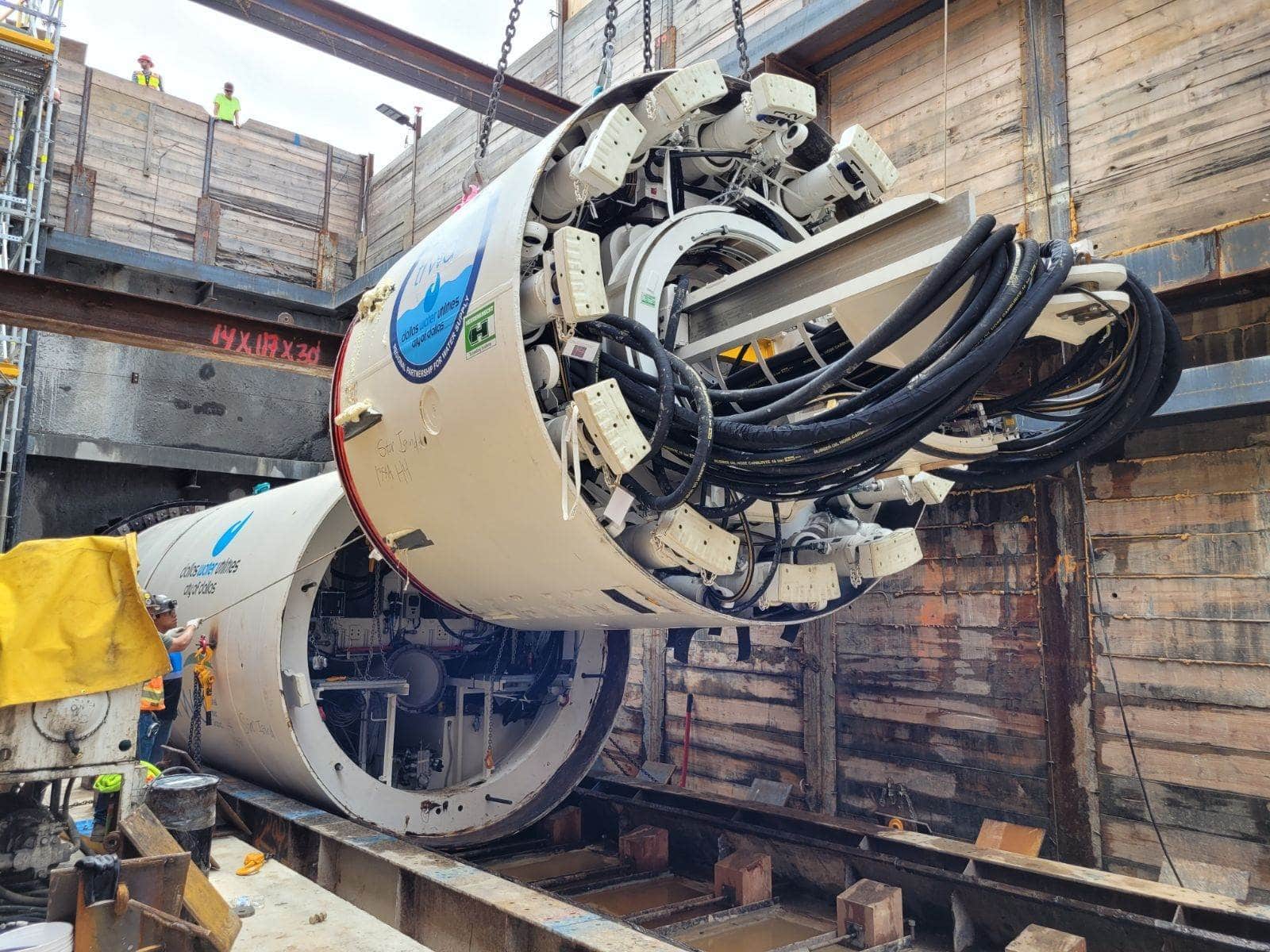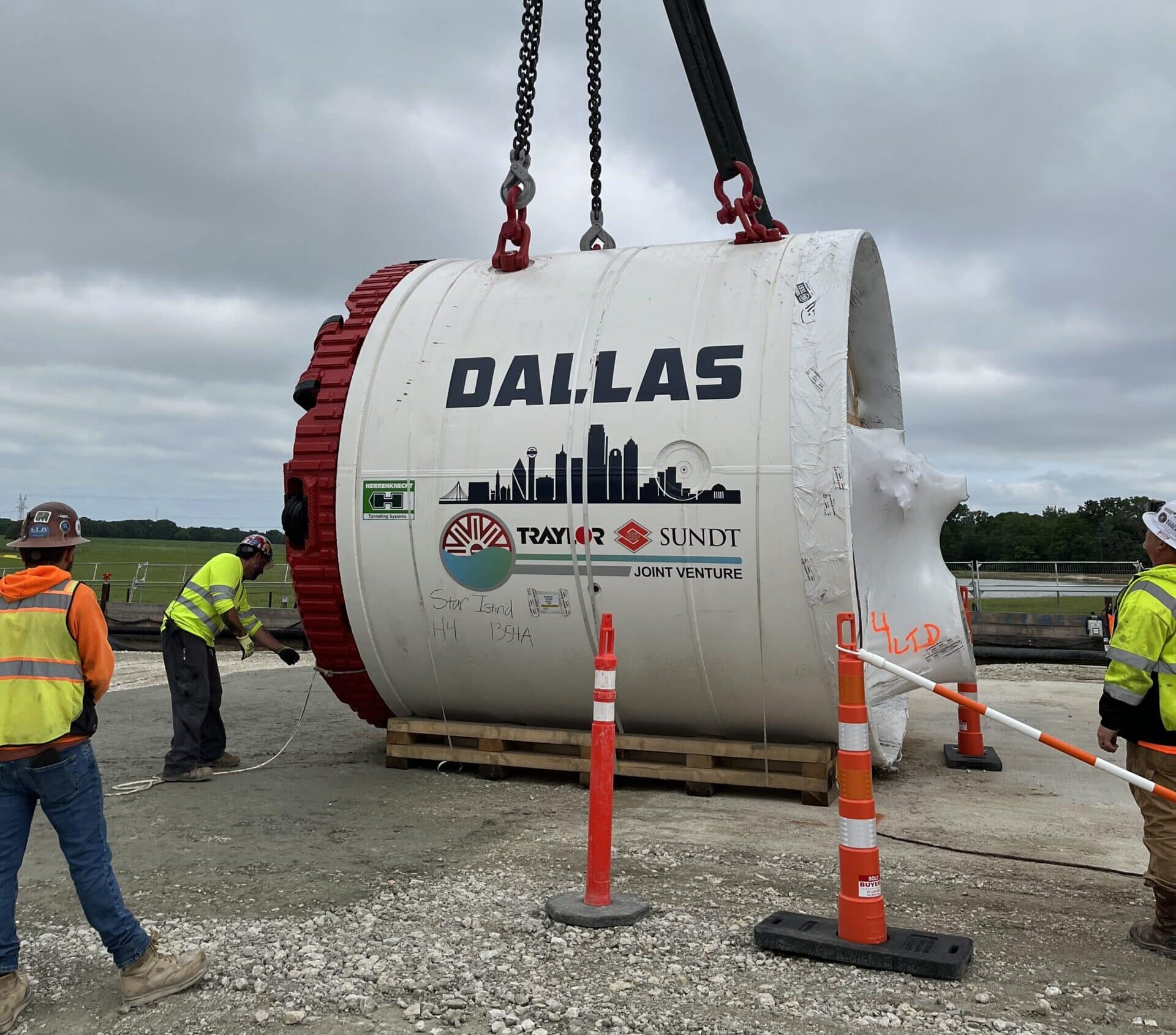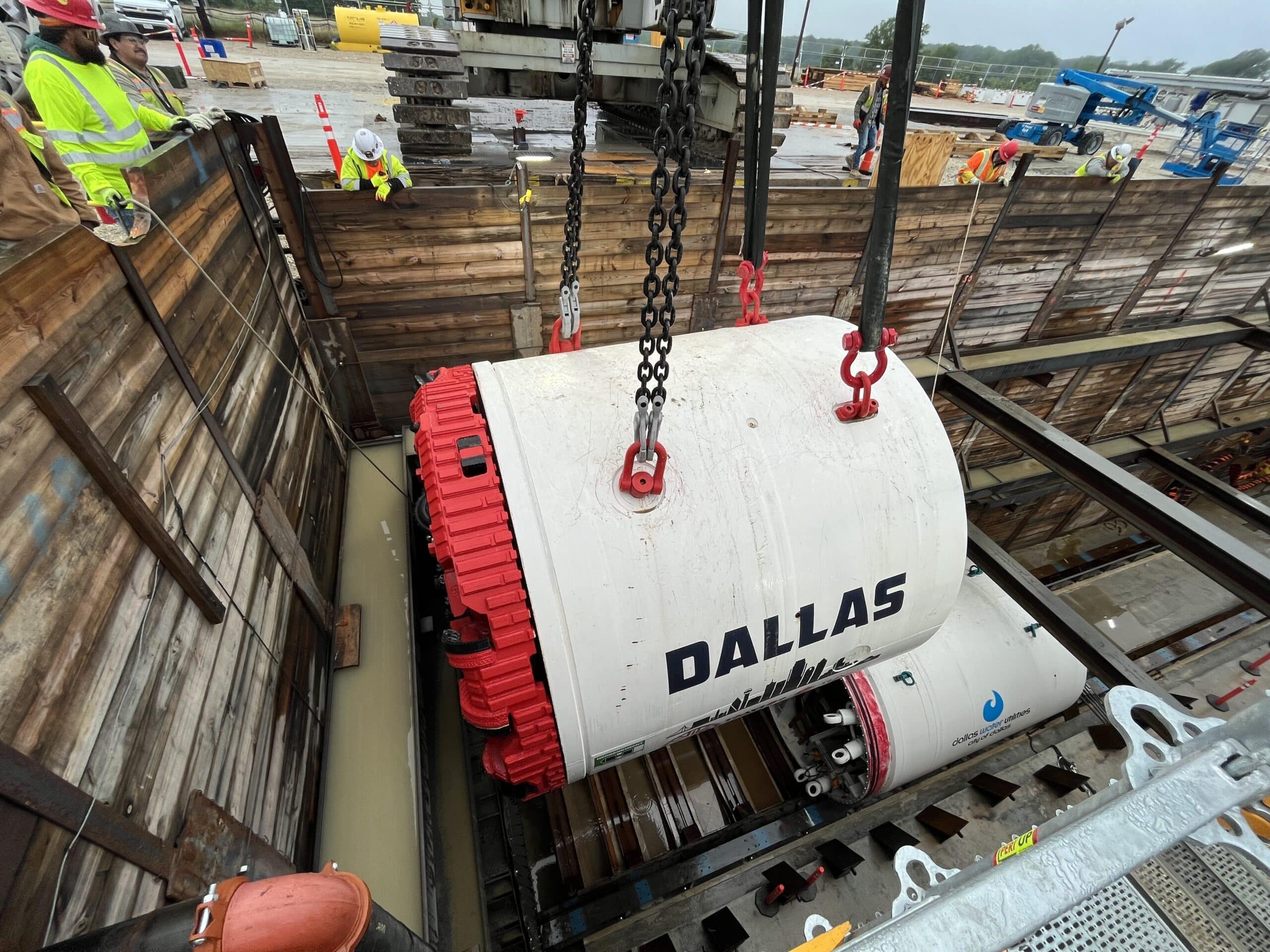
Digging mile-long tunnels is no easy feat. On a five-tunnel job like Long Tunnel Crossing for Tarrant Regional Water District (TRWD) in Texas, specialized equipment was needed to achieve the project scope without disturbing above-ground activities. Eventually, these five tunnels will house 12,360 feet of pipeline along with 31,000 linear feet of open cut 84-inch waterline for an integrated water delivery transmission system in the Dallas area. Sundt, along with joint venture partner Traylor Bros., will construct these tunnels.
According to water experts interviewed for Texas Public Radio, the need for water in Texas is predicted to increase from 17.7 million acre-feet (in 2020) to 19.2 million acre-feet by 2070. Currently, TRWD and the City of Dallas Water Utilities provide water for over 4.1 million residents, and this project will help the state deliver 350 million additional gallons of raw water per day to north central Texas. This project will serve the community and support economic growth in north central Texas by bolstering much needed water delivery capabilities.
A machine that’s anything but boring
For the two largest tunnel segments, each approximately 1 mile in length, the team procured a highly specialized Earth Pressure Balance Tunnel Boring Machine (EPB TBM) from Herrenknecht located in Schwanau, Germany. The 144-inch cylindrical TBM excavates the earth with a rotating cutting wheel, while hydraulic cylinders continuously advance the machine forward. The excavated earth is carried out via conveyor belt and transported back to the launch shaft where it is safely removed.
In addition to excavating, the TBM also installs the segmented, precast concrete shoring system that lines the tunnel. This advanced technology, along with our automated grouting process, assures a quality tunnel is constructed to transport water to families in north central Texas.
Before the arrival of the TBM, the team collaborated on extensive preparation work to ensure the job was done right. Launch and receiving shafts had to be built for each tunnel segment. Site pads were constructed to accommodate the equipment needed for each tunneling method utilized on this project. Because of the rural location, access roads were needed to transport personnel and materials to and from the sites.

Five tunnels, different challenges
The two larger and three smaller tunnels all have their own sets of requirements and potential obstacles to overcome. The first segment is the Cedar Creek tunnel, where the team may run into ironstone and concretions, which are hard rock formations that can be difficult to break through, as well as flood risk to account for. The following section is the Stream A tunnel, where the challenge will be a low cover under the stream channel. This section will be carefully hand-mined from east to west.
The Royall Blvd tunnel will be installed by slurry micro tunneling using a Micro-tunnel Boring Machine (MTBM). Construction of deep shafts and open cut on both sides will have to be carefully planned and executed to cross under existing utilities, the Union Pacific Railroad, and Texas State Highway 31, locally known as Royall Blvd. The fourth tunnel segment is the Hollywood Lake tunnel, the longest segment of the project, at 5,900 feet, will be mined with the EPB TBM, which will launch from the eastern limits of the tunnel and mine to the west. The final stretch of the project is the SH-155 tunnel that will be mined with the Slurry MTBM and require careful coordination with highway and utility crossings. It’s also located near a high school, so the team will employ extra precautions to avoid disturbing school activities.

Expanding our expertise
Due to the amount of tunneling work, this job is a joint venture project between Traylor Brothers and Sundt. Being able to work alongside Traylor with their wealth of knowledge in mining work and tunnel excavation is providing ample opportunity to grow our own expertise in these areas.
“Working with Traylor has been great,” said Senior Project Manager Josh Bunting. “There’s a line of open and honest communication with their team, and it’s allowed us to work together and learn a lot in the process. We’re utilizing several construction techniques on this project that many of us at Sundt have not yet had the chance to use on a project. Being able to provide hands-on assistance with things like the TBM and shoring systems has been invaluable.”
In total, there are 10,944 linear feet of TBM tunnels, 1,727 linear feet of micro-tunneling runs, 191 linear feet of hand-mined tunnel. Additionally, the team will lay 31,000 feet of 84-inch-diameter, open cut carrier pipe throughout that will transport the water. The project is anticipated to wrap up in early 2026.